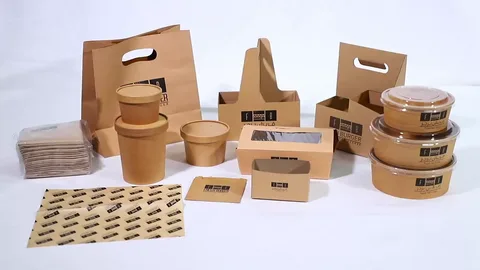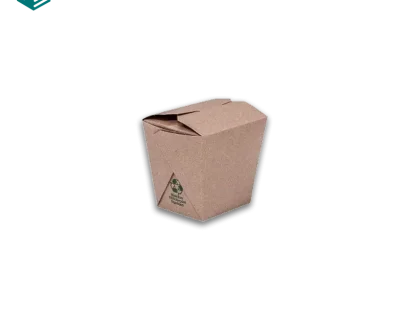When starting or running a food business, selecting the right food packaging is an essential decision. Packaging plays a crucial role in ensuring that your product reaches customers safely while maintaining quality and appearance. It not only serves to protect food but also helps in branding and compliance with health regulations. In this article, we’ll explore key factors that can guide you in choosing the best food packaging for your business, ensuring your products are both appealing and safe for consumption.
Understand Your Product’s Needs
The first step in selecting food packaging is understanding your product’s specific needs. Different food items require different types of packaging to maintain their freshness, safety, and appeal. For example, perishable products like dairy and meats require packaging that preserves freshness and prevents contamination. In contrast, dry products like snacks or grains may only need protective wrapping to shield from external factors like moisture or sunlight. Understanding these needs ensures you choose packaging that provides the necessary protection for your product.
Additionally, consider the packaging’s role in extending shelf life. Some products, like baked goods or frozen meals, may require vacuum sealing or modified atmosphere packaging to extend freshness and prevent spoilage. On the other hand, non-perishable products like canned goods or pasta may only need a basic protective wrap. By identifying these needs early, you can determine the type of material and design that will best suit your food packaging requirements.
Consider Material Options
Choosing the right material for your food packaging is one of the most critical decisions you’ll make. The material you choose should be compatible with your food type and provide the necessary protection. Common food packaging materials include plastics, glass, metal, paper, and biodegradable options. Each material has its pros and cons, which can significantly affect both product quality and customer perception.
Plastic is a popular choice due to its durability and versatility. It’s lightweight, cost-effective, and can be molded into various shapes and sizes. However, plastic packaging has been criticized for its environmental impact, leading many businesses to explore more sustainable options. Glass offers a premium look and is ideal for products like sauces, beverages, and jams. It’s non-reactive, which is an advantage for certain foods, but it’s heavier and more prone to breakage. Metal cans, on the other hand, provide excellent protection from light, oxygen, and moisture, making them perfect for canned foods and beverages.
Ensure Compliance with Food Safety Standards
Food packaging is subject to strict regulations to ensure the safety of the product and the consumer. It’s crucial to select packaging that complies with local and international food safety standards. For example, in the United States, the Food and Drug Administration (FDA) sets guidelines for food packaging materials, ensuring they are safe for direct contact with food. These regulations are designed to prevent contamination and ensure that packaging materials do not leach harmful chemicals into food.
When choosing food packaging, check if the materials are approved for food contact, as some materials may contain toxic substances that can affect the quality of your food. Additionally, consider the packaging’s ability to withstand different temperatures and conditions, especially if your products need to be stored in refrigerated or frozen environments. Ensuring compliance with food safety standards not only protects your consumers but also prevents costly legal issues and product recalls.
Prioritize Sustainability
Sustainability is becoming increasingly important in the food industry, both from an environmental and consumer perspective. Consumers are more conscious of the impact their purchases have on the environment, and businesses that prioritize eco-friendly packaging are often seen more favorably. When choosing food packaging, consider using recyclable, compostable, or biodegradable materials that can minimize waste and reduce the carbon footprint of your business bonitopak.
Materials like recycled paper, plant-based plastics, and biodegradable films offer eco-friendly alternatives to traditional plastic packaging. While these materials may come at a higher cost, the long-term benefits of sustainability, including attracting environmentally conscious consumers, can outweigh the initial investment. Moreover, many customers appreciate transparency, so highlighting your commitment to sustainability on your product packaging can serve as a powerful marketing tool. Balancing sustainability with functionality is key to appealing to modern consumers while fulfilling your packaging needs.
Focus on Branding and Consumer Experience
Food packaging is an extension of your brand. It’s the first point of contact with the consumer, and it can significantly influence buying decisions. Packaging that is visually appealing, functional, and easy to use can enhance the overall consumer experience. Consider how your packaging design reflects your brand’s identity and values. Whether it’s through bold, eye-catching graphics or minimalist designs, your packaging should convey the right message about your product and business.
Additionally, packaging that is easy to open, reseal, or store can enhance the convenience for consumers, which can drive repeat purchases. Packaging innovations, like easy-pour spouts, zipper closures, or single-serve portions, can offer convenience and usability that resonate with today’s on-the-go consumer. Thoughtfully designed packaging not only serves a functional purpose but also serves as a powerful marketing tool. By choosing packaging that aligns with your brand and resonates with your target audience, you can enhance the overall customer experience and build loyalty.
Conclusion
Selecting the best food packaging for your business is a multifaceted decision that involves understanding your product’s needs, choosing the right materials, ensuring compliance with safety standards, and incorporating sustainability and branding elements. By carefully considering these factors, you can ensure that your food packaging not only protects your products but also promotes your brand and appeals to your target customers. The right packaging is an investment that can enhance the quality, safety, and success of your food business for years to come.













